9 Gorgeous Aquatic Plants That Are Surprisingly Easy to Grow
Ponds come alive when they are surrounded and filled with healthy water plants. They do more than add beauty, as they can help maintain balance in the pond ecosystem. The right plants can help filter the water and provide food and shelter for aquatic life. Knowing their growth habits and care tips will help them flourish. Stay with us as we explore different plants and ways to help them thrive in your pond.
This post may contain affiliate links, which helps keep this content free. Please read our disclosure for more info.
Water Lilies
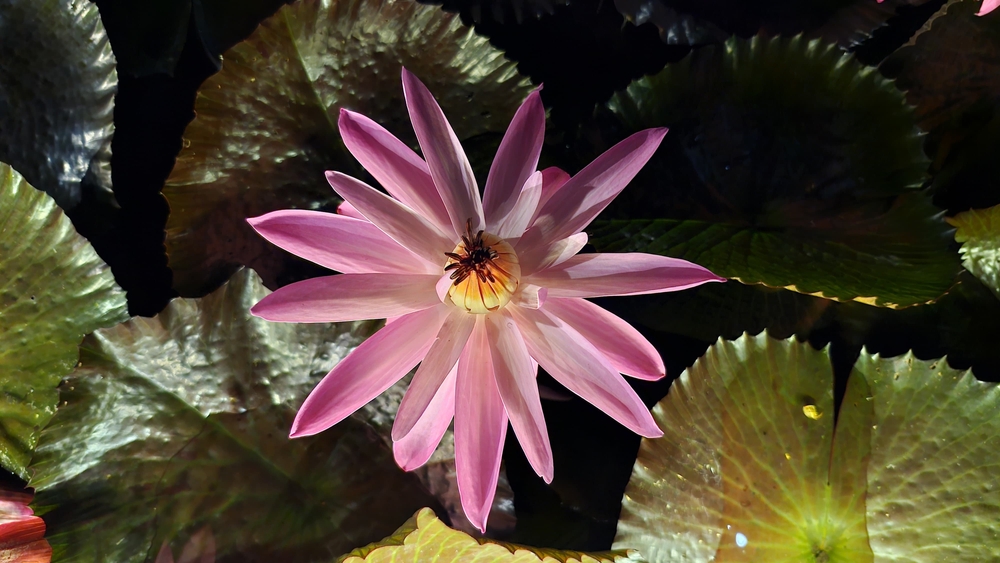
Water lilies are well-loved for their wide, floating leaves and colorful blooms. They help shade the water, which can benefit fish and reduce algae growth. These plants grow best in calm ponds where their roots can settle in containers or the pond bottom. They need at least six hours of sunlight each day to flower well.
To grow water lilies, plant them in heavy clay soil in a wide container and place it at the proper depth for the variety. Fertilize during the growing season to support blooming. Remove old or damaged leaves to keep them healthy. Hardy types can stay in deep water year-round, while tropical kinds should be brought inside during cold months.
Lotus
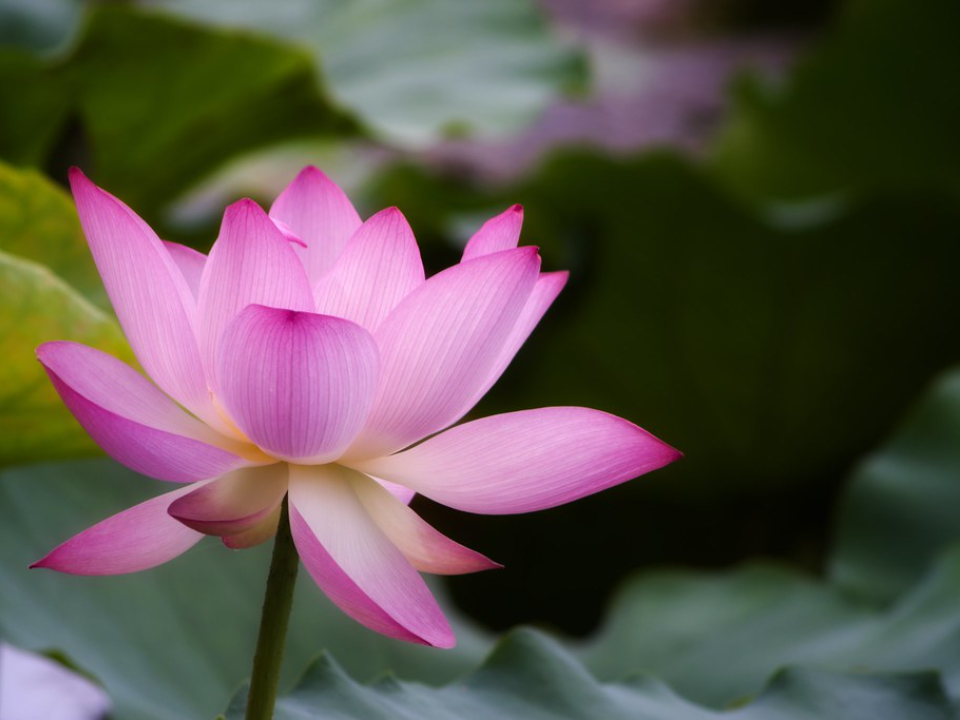
Lotus plants have tall stems, large round leaves, and striking flowers that rise above the water. They do well in warm conditions and require full sun for strong growth. The leaves can stand several feet high, making them a dramatic focal point in a pond. Their roots grow in the soil at the base of the pond.
Plant lotus tubers in a wide, shallow container filled with rich soil and submerge them at the right depth. Fertilize regularly during the growing months for bigger flowers. In cooler regions, store tubers indoors during winter to protect them from frost. Keep them in still or slow-moving water for best results.
Pickerel Rush
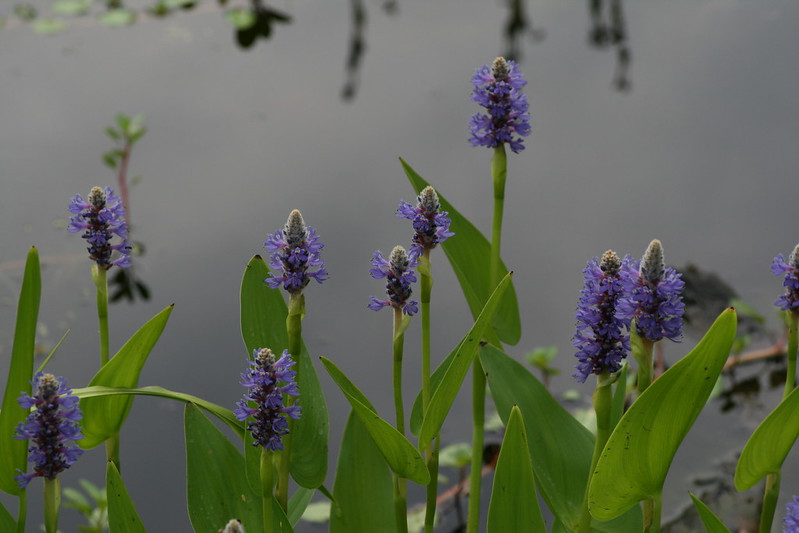
Pickerel rush produces upright spikes of blue or purple flowers that attract bees and butterflies. Its long green leaves add texture and shape along pond edges. It thrives in shallow water or moist soil where its roots remain wet. Over time, it can form clumps that make a natural border.
Grow pickerel rush in planting baskets filled with clay soil and place them in shallow water. Full sun will encourage more blooms, though it can handle partial shade. Trim away spent flowers to promote fresh growth. Divide clumps every few years to keep the plant manageable.
Water Lettuce
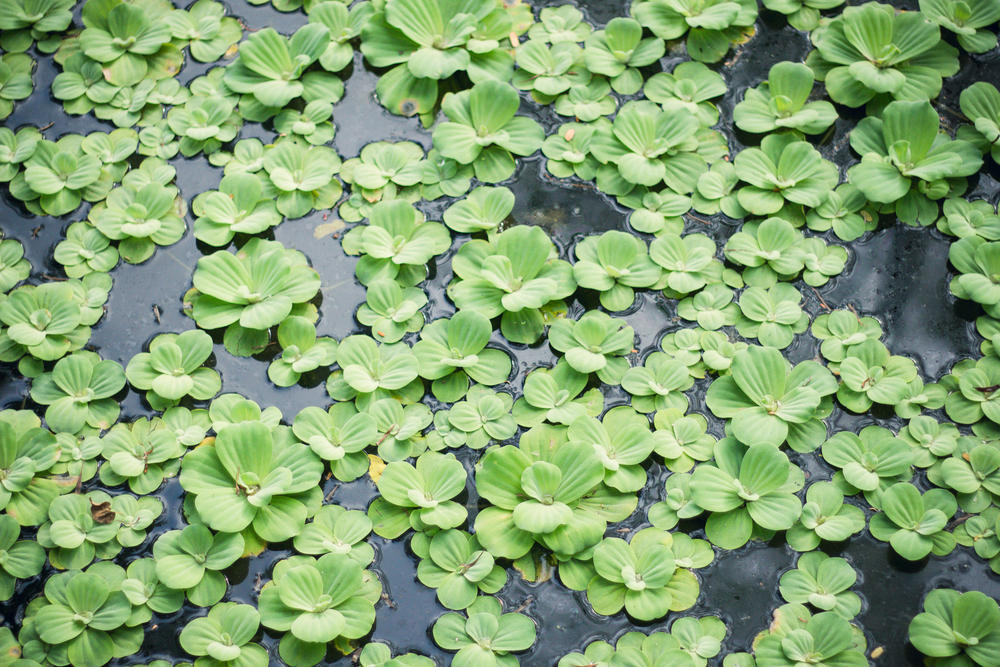
Water lettuce is a floating plant with soft, velvety leaves shaped like small heads of lettuce. It creates shade on the pond surface and limits algae growth by blocking sunlight. This plant floats freely without rooting in soil. It spreads quickly in warm conditions.
Place water lettuce in a sunny or partly shaded area of the pond. Remove extra plants to avoid overcrowding. In colder areas, treat it as an annual or move a few plants indoors for the winter. Keep the leaves dry above the surface to prevent rot.
Water Hyacinth
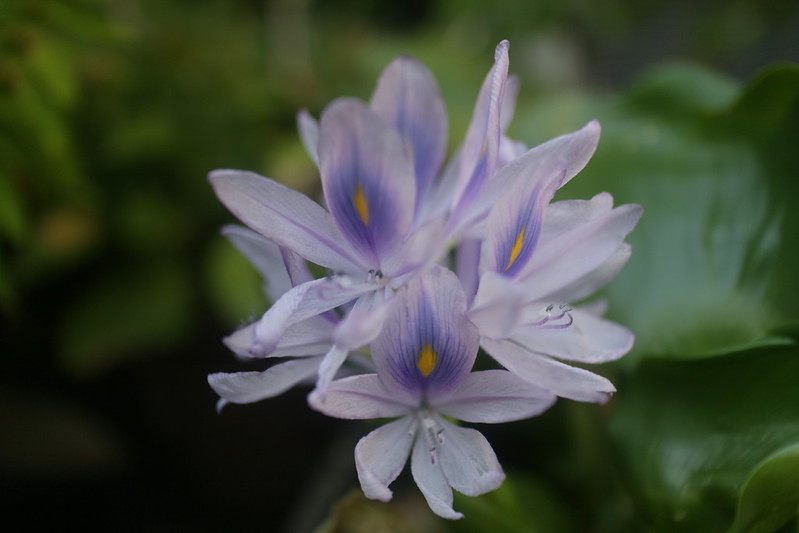
Water hyacinth is a floating plant with glossy leaves and purple flowers. It grows quickly in warm water and provides shade for fish. Its roots dangle in the water, filtering it as they grow. This plant is best for larger ponds due to its spreading habit.
Place water hyacinth in sunny areas for the best flowering. Remove excess plants to keep them from taking over. In colder climates, treat them as annuals or bring them indoors before frost. They need warm water to thrive and bloom.
Creeping Jenny
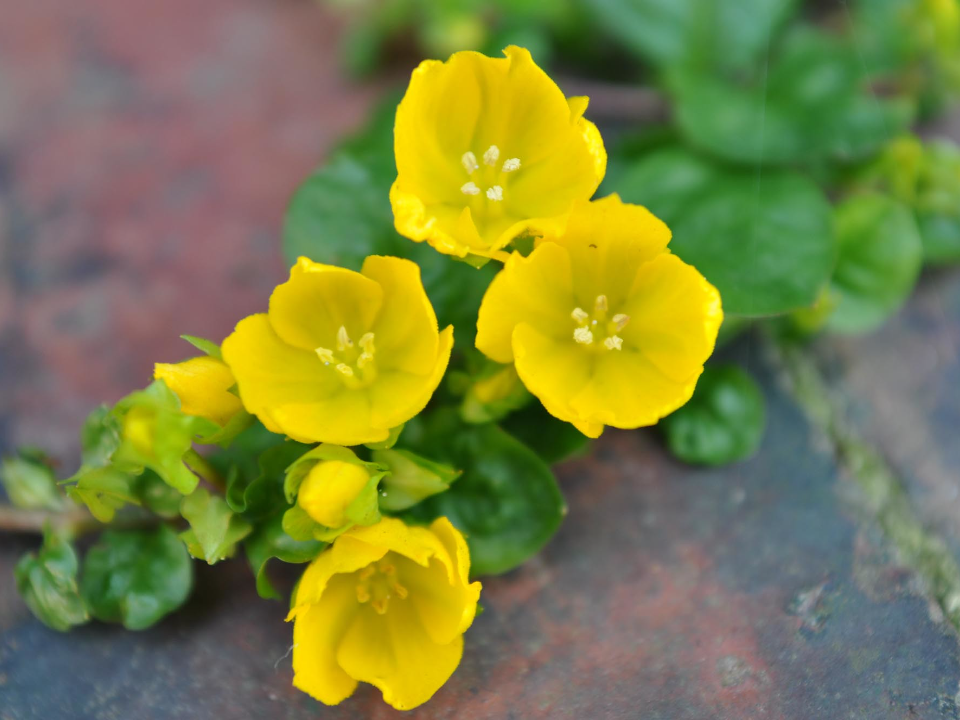
Creeping Jenny is a low-growing plant with round green or golden leaves. It grows along pond edges and spills over rocks, creating a soft border. It tolerates moist soil and shallow water. Its spreading habit makes it a good choice for filling gaps around pond margins.
Plant creeping Jenny in soil at the pond edge where it will get plenty of sun to partial shade. Keep the roots wet for healthy growth. Trim back runners to keep it from spreading too far. It can handle cooler weather and often stays green well into autumn.
Marsh Marigold
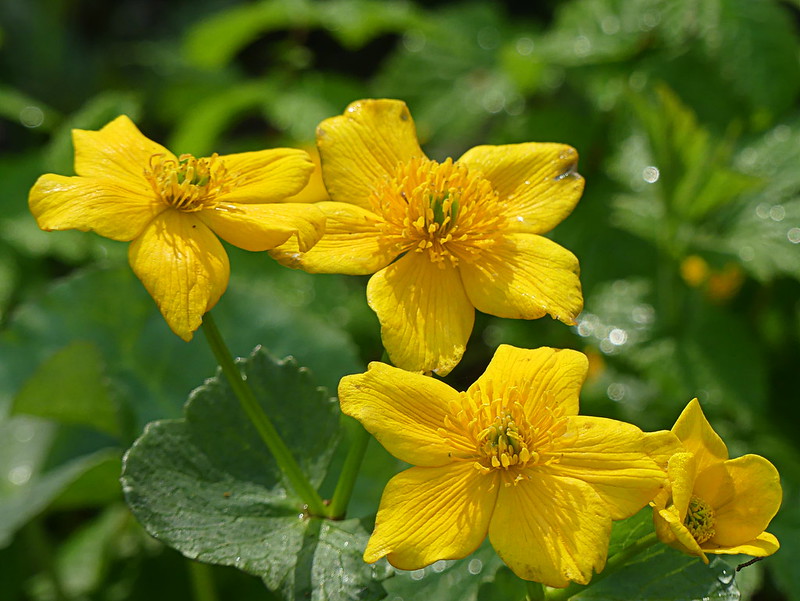
Marsh marigold is an early spring bloomer with bright yellow flowers. It grows well in shallow water or wet soil near pond edges. The green leaves form a dense clump that adds texture to the pond border. It prefers cooler climates and partial to full sun.
Plant marsh marigold in moist soil or a planting basket placed in shallow water. Deadhead flowers to encourage more blooms. In warmer regions, give it afternoon shade. Divide clumps every few years to keep plants healthy.
Arrowhead
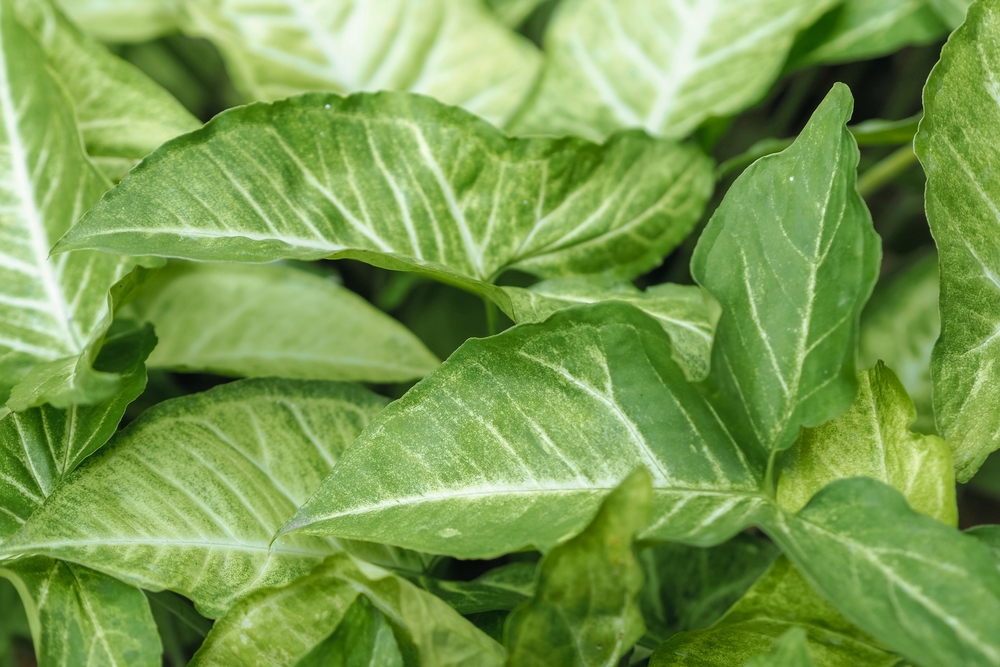
Arrowhead has arrow-shaped leaves and white flowers with yellow centers. It grows in shallow water with its roots anchored in mud or soil. This plant is a favorite for attracting dragonflies and other pond life. It can grow quite tall in ideal conditions.
Plant arrowhead in baskets filled with heavy soil and place them in water up to a foot deep. It prefers full sun for best flowering. Remove dead leaves to keep the plant tidy. Divide clumps every few years to prevent overcrowding.
Taro
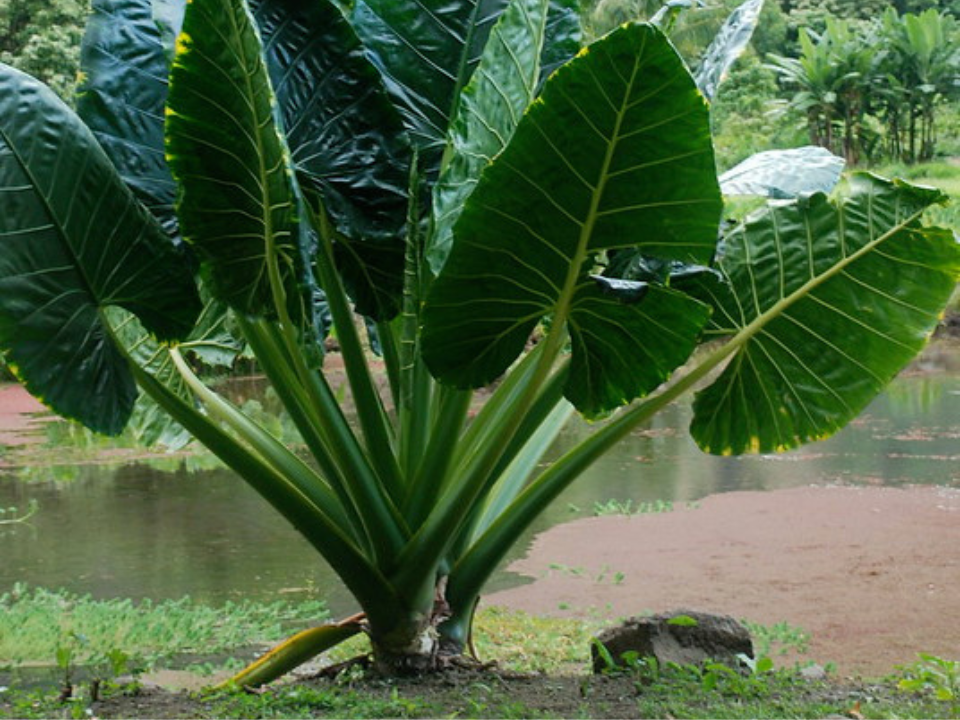
Taro is a tropical plant with large, heart-shaped leaves. It grows well in shallow water and adds a lush, exotic look to ponds. It can be green or have variegated leaves, depending on the variety. The roots grow in the soil while the leaves rise above the water.
Plant taro in a container with rich soil and place it at the pond edge or in shallow water. It needs warm temperatures and full sun to partial shade. In cold areas, bring it indoors before frost. Water regularly if planted in moist soil outside the pond.
This article originally appeared on Avocadu.
